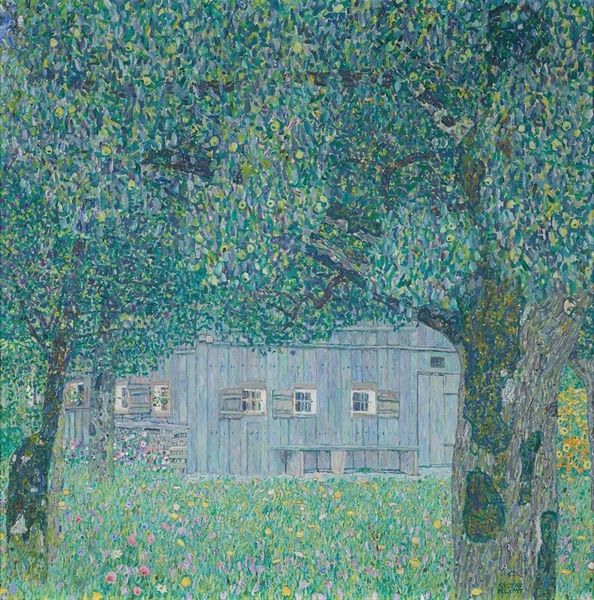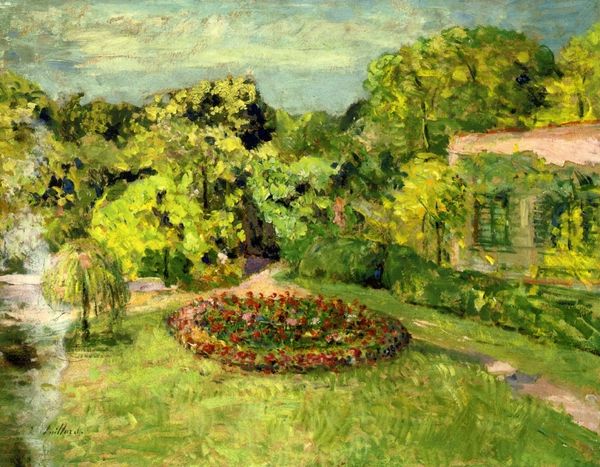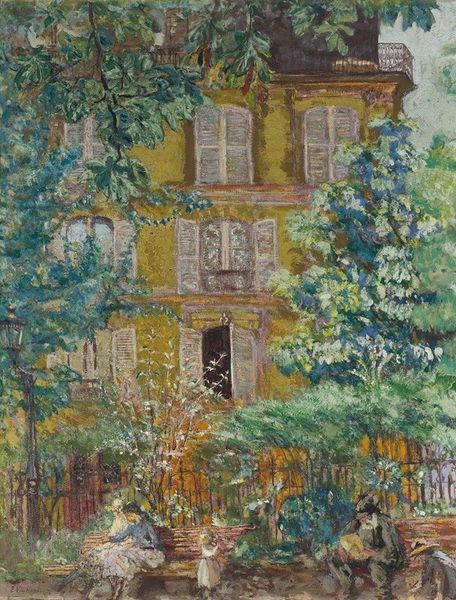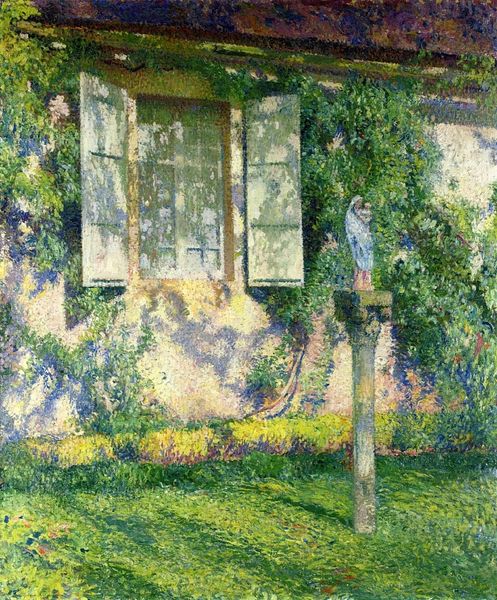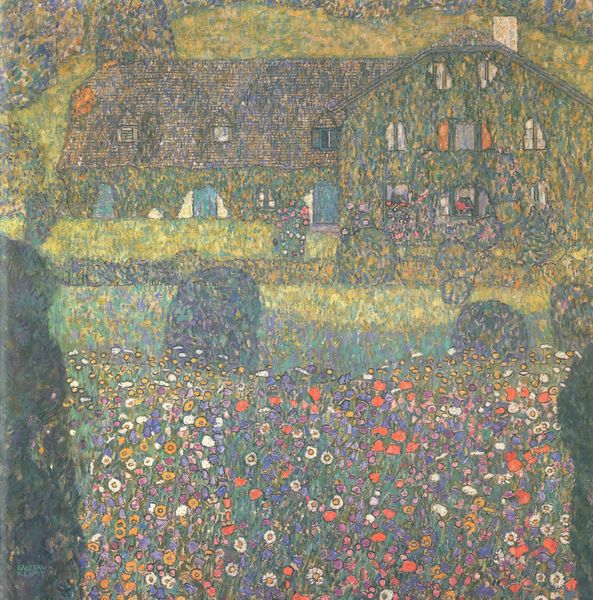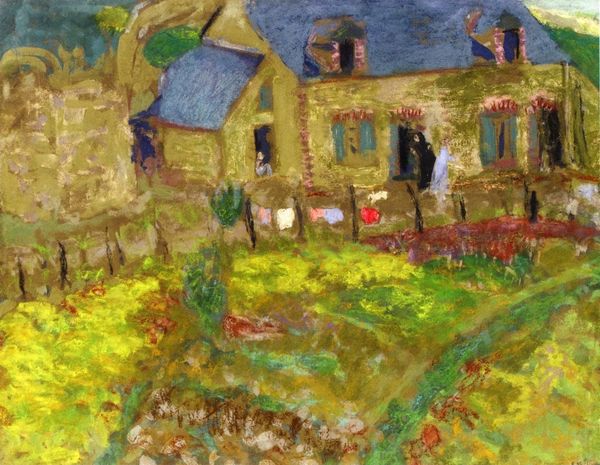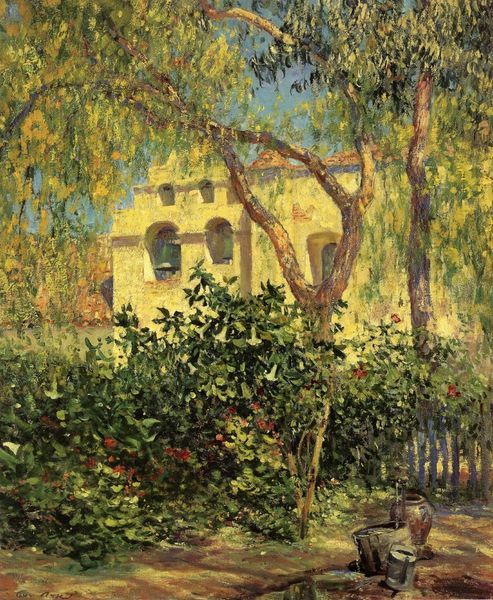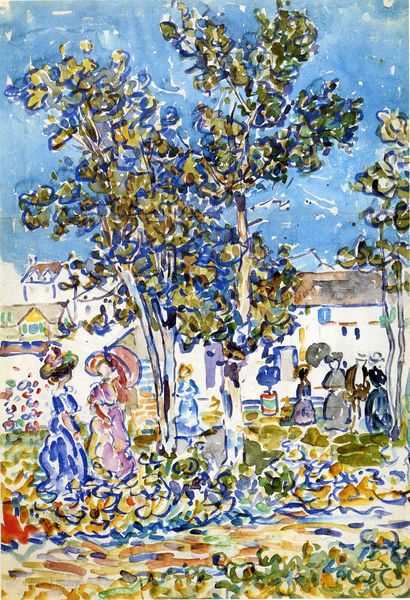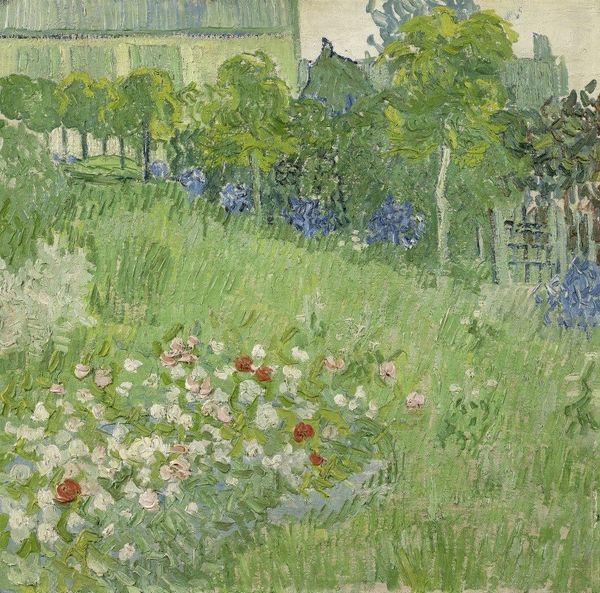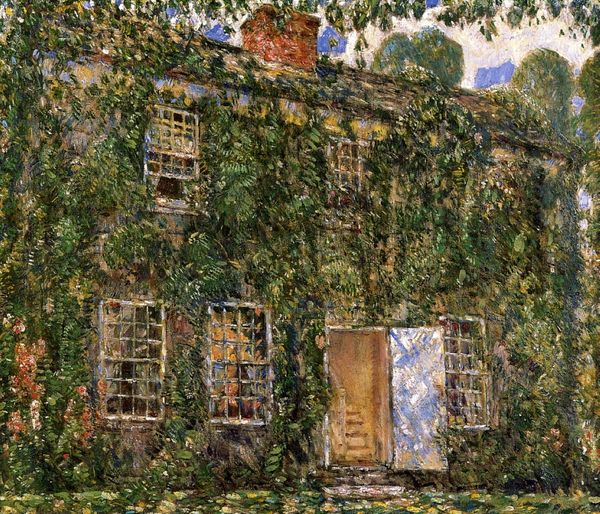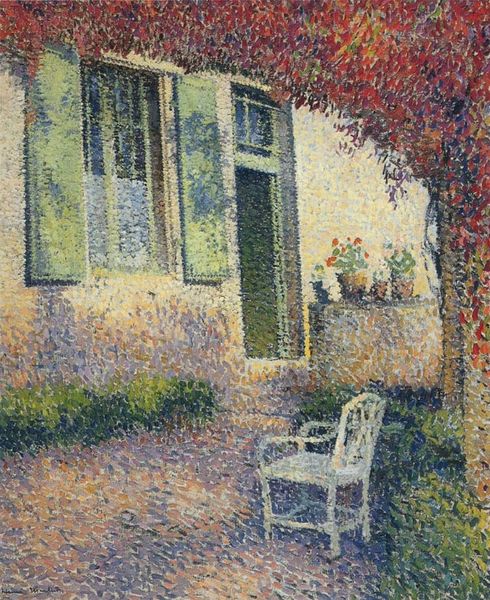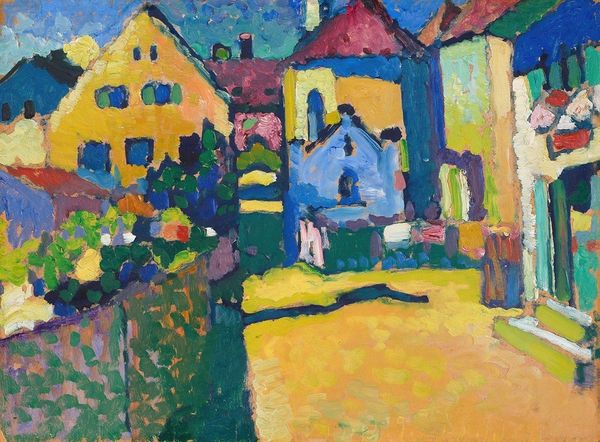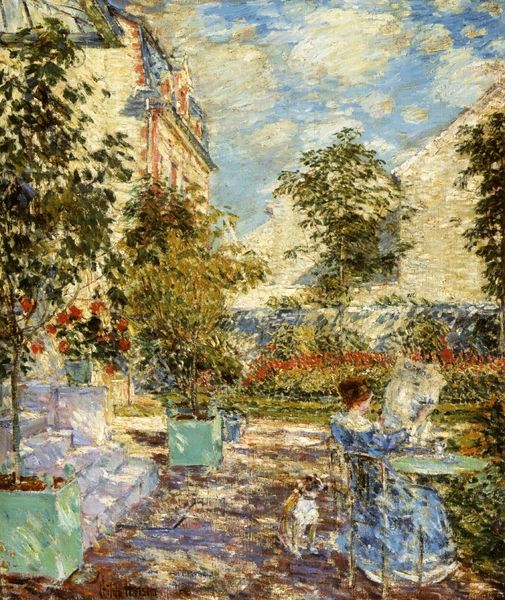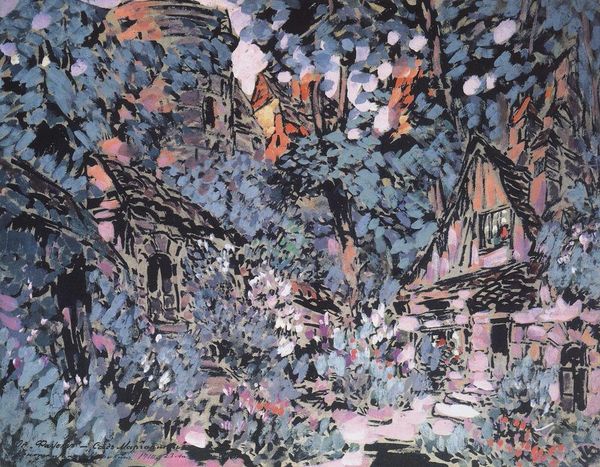
Dimensions: 110 x 110 cm
Copyright: Public domain
Curator: Gazing upon Klimt’s "The House of Guardaboschi" from 1912, the first thing that strikes me is how engulfed it is in foliage. It feels almost like a secret, a place being swallowed by the earth. Editor: Indeed! Klimt’s use of paint in this oil landscape renders the house subordinate, blending into nature itself. There’s an intriguing tension between architecture and the organic world, a reflection of the era's architectural anxieties perhaps? The house, once a symbol of societal order, becomes enveloped, challenged by nature’s persistence. Curator: Absolutely. And consider the color! That vibrant, almost suffocating green feels powerfully symbolic. It echoes the theme of the hidden, and the suppressed—things we might find in folklore connected with hidden houses, wildness and transformation. Editor: The windows become these little narrative frames. The pots of flowers – splashes of red and yellow – draw the eye, punctuating the sea of green. Are they expressions of cultivated nature versus untamed, perhaps commenting on the human need to impose order, even within retreat? Curator: They read to me as offerings, hints of warmth and welcome from those within. And they hint to the cycle of rebirth, and the way the house becomes an anchor of memory through organic, cyclical growth. You can almost smell the ivy, feel the earth—it's deeply immersive, beyond mere visual representation. It almost seems a stage for dreams. Editor: An escape, absolutely. But what kind of escape? For whom? It also speaks to the burgeoning art market and the collecting habits of the Viennese elite at the time. Works like this become objects of aspiration, reflecting an idealized connection with nature amidst increasing urbanization. Curator: Right. It’s a dance, isn't it? Between the cultivated and the wild, control and abandon. Perhaps this piece suggests a delicate balance that could easily tilt. Editor: A beautiful premonition. It leaves us with questions more than answers, the sign of compelling work. Curator: Precisely! Thank you, as always, for expanding how I understood that painting!
Comments
No comments
Be the first to comment and join the conversation on the ultimate creative platform.
